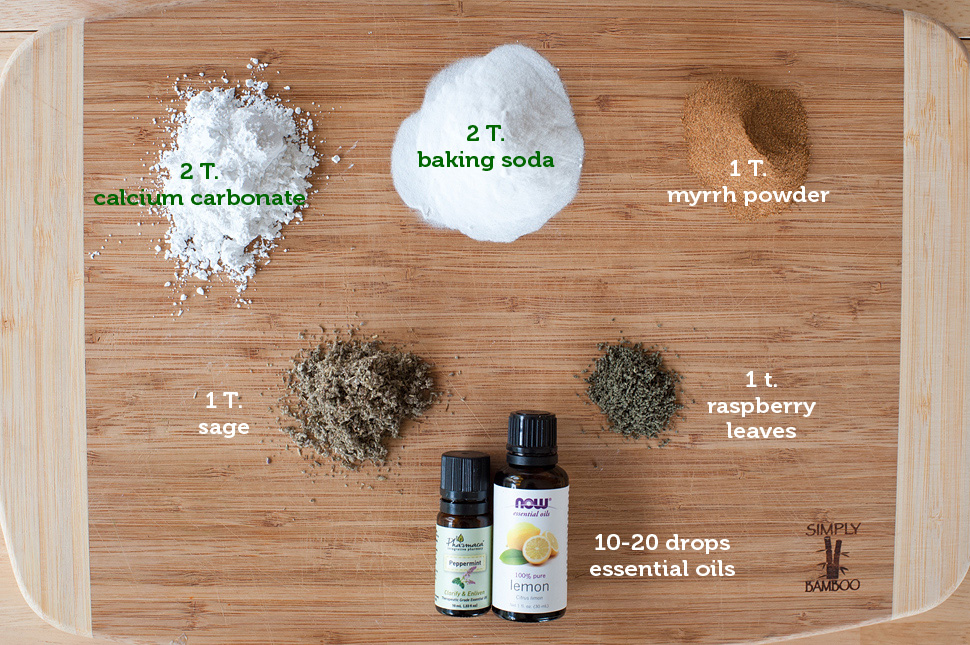
Ingredients:
- 2 T. calcium carbonate
- 2 T. baking soda
- 1 T. myrrh powder
- 1 T. sage
- 1 t. raspberry leaves (or dried lemon peel or fennel or cloves)
- 10-20 drops essential oils (peppermint, lemon, clove, cinnamon, tea tree, spearmint, or wintergreen are all good choices)
Toss all ingredients into a spice grinder (my old blade coffee grinder is great for this!) and give it a good whirl. Transfer into a flip top bottle for easy and hygienic application onto a wet toothbrush or put a pea-sized amount on your palm and pick it up with a wet toothbrush.
I used lemon and peppermint essential oils, so together with the sage, it smelled a bit earthy and minty minty fresh! My teeth felt squeaky clean just like after a trip to the dentist. It only takes a week or so to get used to the non-sweetened taste, but if you prefer a touch of sweetness, go ahead and add ~1 T. of Xylitol or Stevia.
I’ve never felt that commercial or even all-natural toothpastes got my teeth very clean. And then I started reading about all the evils of fluoride, how glycerin in toothpastes isn’t a good idea, and how it’s possible to remineralize teeth.
I bought a bottle of tooth powder before our New Year’s trip to NYC and thought I’d give it a try (one less liquid to carry-on. Bonus!), and I’ve never gone back to toothpaste. My mouth has never felt so healthy, even though I haven’t been to the dentist in two years (Yikes! Must fix that soon. Any holistic dentist recommendations in the Seattle area?). My gums don’t bleed anymore when I (occasionally) floss. My next step is to try oil pulling as soon as I can get over the idea of swishing oil.
P.S. Some people might be concerned with the abrasiveness of baking soda, but according to an abrasive index of toothpastes called the RDA index, it’s actually just a step above water. A toothpaste or powder needs a certain amount of abrasiveness to be effective, but it’s important to grind the myrrh powder, sage, and raspberry leaves into small enough particles so that they don’t damage your tooth enamel.
